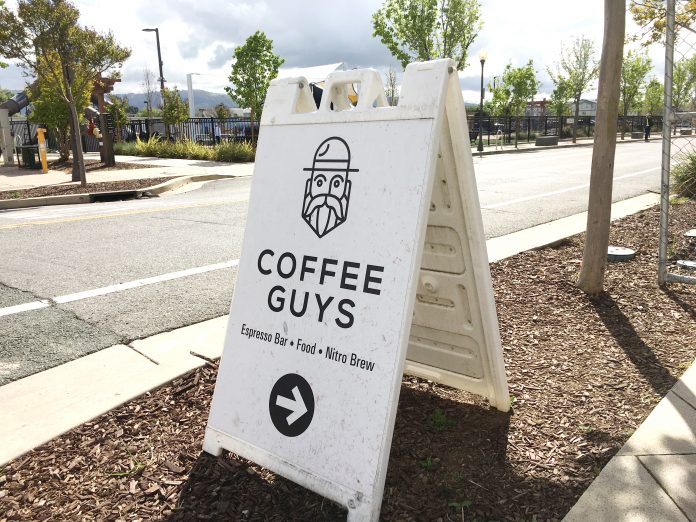
A-Frame signs line the sidewalks in and around downtown Morgan Hill, advertising for business both in town and outside the city limits. These signs have been a point of controversy between business owners, the city and residents.
In an effort to ease tensions, the Chamber of Commerce hosted a community discussion to get ideas and alleviate any confusion regarding the A-Frames.
The city’s code doesn’t allow signage of any kind on the public right-of-way, but Morgan Hill Assistant Manager Leslie Little said the city doesn’t have the resources to continuously site businesses or remove signs.
Chamber President John Horner said there have been conflicting messages between the city and business owners as to what is allowed and what is enforced. Because there are technically no signs allowed in the city, Horner said the meeting on April 10 served as a brainstorming session for ways to deal with the signs before they became “a lightning rod” issue.
“How do we do things that are not only aesthetically appealing, but safe?” said Horner. He told the Times that there were likely to be more meetings regarding the A-Frame signs.
Seventy-two percent of respondents in a Chamber of Commerce survey said they didn’t know the city ordinance currently prohibited A-Frame signs, but only 22 percent of respondents said they used the signs themselves.
Coffee Guys, the popular café in downtown Morgan Hill, uses two A-Frame signs to attract patrons. One sits just outside the West Third Street coffee shop and the other is up the block on Depot Street, catching the attention of CalTrans commuters and park goers. Amanda Forestieri, the manager at Coffee Guys, told the Times about the sign across the street, “It picks up quite a bit of business.”
Forestieri said that customers come in to order and will tell her the sign caught their attention.
But local businesses are not the only ones using A-Frames to get new customers. Little told the Times that in several instances, A-Frame signs came from out-of-town businesses that advertised in Morgan Hill.
The A-Frame signs found throughout the downtown are typically no taller than three feet, and can be easily moved by a single person. The signs are often placed at the edge of sidewalks and on busy intersections, directing motorists and pedestrians to the specified business.
Horner said the signs are more than a nuisance to other business owners who have complained to the chamber and city that the A-Frames take up valuable advertising real estate on the sidewalk in front of their stores. He said, the signs can also be safety hazards, causing restricted access to city right-of-ways and blocking traffic.
“We can’t be calling people everyday saying, ‘get your sign removed,’” said Little. She told the Times that the staff could bring findings and recommendations in front of the city council to create a more clear set of rules or alternatives for business owners. A permitting process was an outcome that Little floated—a system that would allow the city to approve and keep track of signage.
Horner believed any solution to the A-Frames would be about striking a balance between helping businesses advertise and getting a handle on the growing amount of signs in the city. Horner said the big question was, “How do we not hinder the ability of business to have success?”







